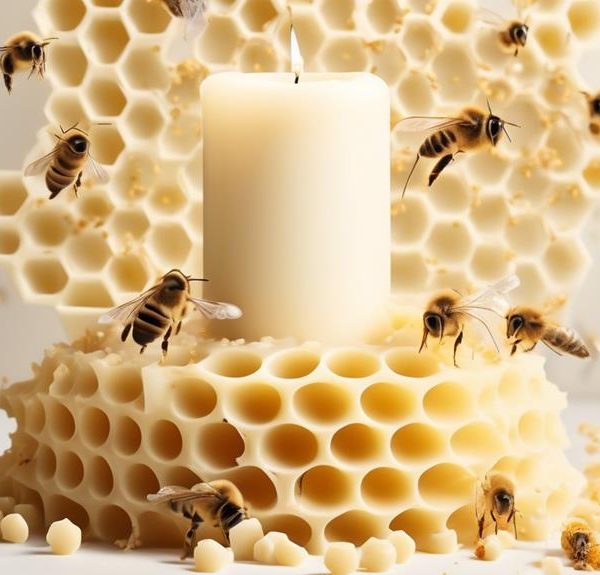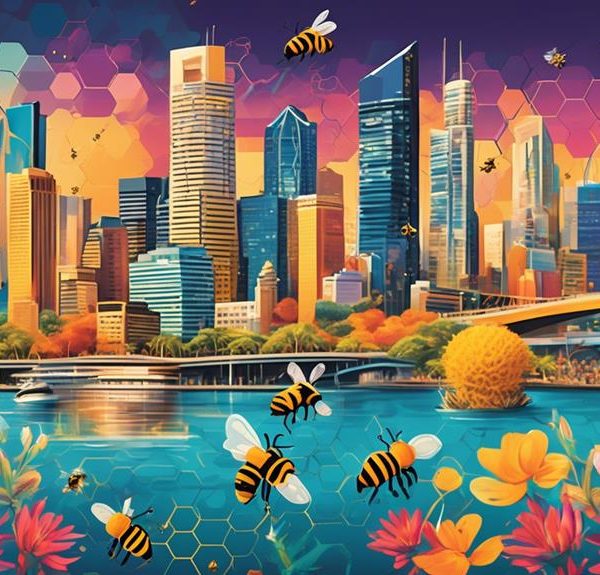Uncover the reasons behind your crumbly beeswax and learn how to prevent it in our comprehensive guide.
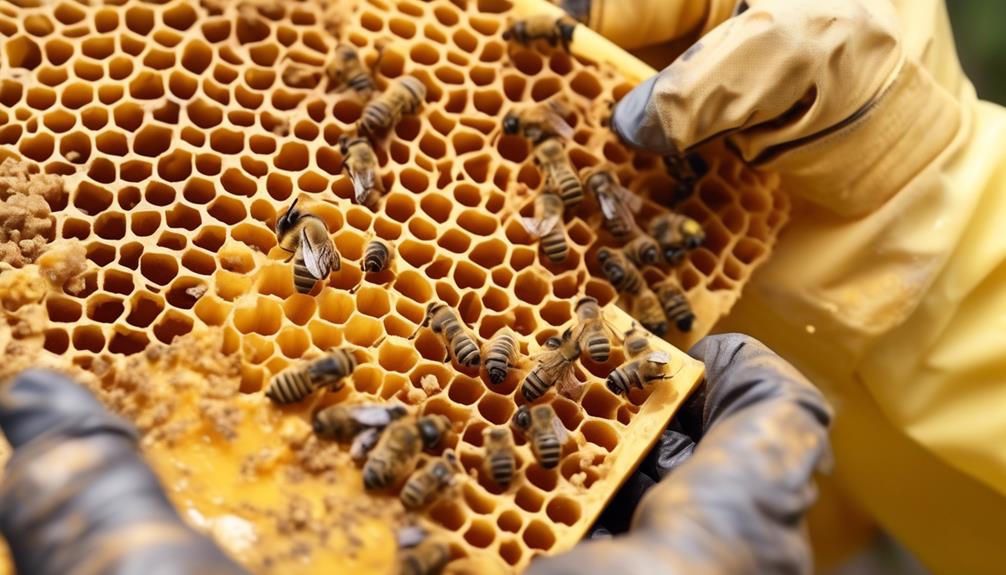
Why Is My Beeswax Crumbly?
Even if you're convinced that your beeswax shouldn't be crumbly, it's important to remember it's not necessarily a sign of poor quality. The texture of beeswax can vary greatly, and it's influenced by several factors including its age, the temperature it's stored at, and the way it's processed.
You're likely curious as to what exactly could be causing your beeswax to crumble and how to prevent it, aren't you? Well, let's take a closer look and unravel this beeswax mystery together.
Key Takeaways
- Beeswax composition is mainly comprised of esters, hydrocarbons, and fatty acids.
- Factors such as temperature, humidity, age, and purity can affect the texture of beeswax.
- Improper storage, overheating, excessive handling, and lack of cleaning can lead to crumbly beeswax.
- To prevent crumbly beeswax, closely monitor melting process, use pure beeswax, store in a cool, dry place, and seek professional advice if issues persist.
Understanding Beeswax Composition
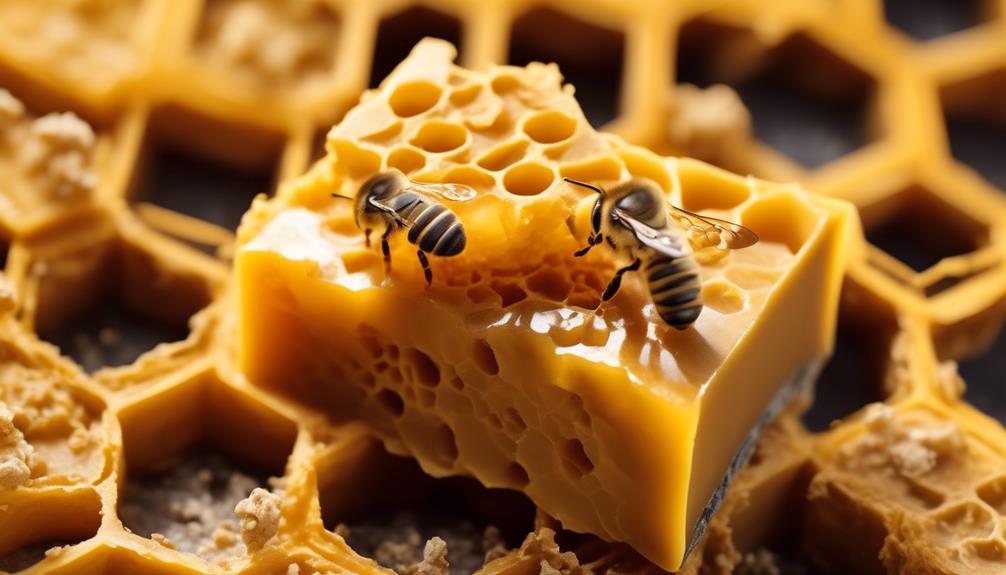
Diving into the composition of beeswax, you'll find it's a complex substance made predominantly of esters, hydrocarbons, and fatty acids. This intricate mix is largely produced by worker bees, who've special glands that convert the sugar content in honey into wax. Imagine that, a tiny creature's biological process is responsible for the creation of this versatile material.
The esters in beeswax, which make up around 70% to 80% of its composition, play a vital role in determining its texture and melting point. These compounds are what give beeswax its firm yet pliable consistency. Hydrocarbons, on the other hand, contribute to around 14% to 35% of its makeup, while the fatty acids account for another 12% to 15%. It's this unique combination that results in beeswax's distinct properties.
Understanding the composition of beeswax is crucial, especially if you're dealing with issues like crumbliness. Changes in the proportion of these components can significantly affect the quality and characteristics of your beeswax. By knowing what makes up this natural substance, you're better equipped to troubleshoot any issues and ensure you're utilizing beeswax to its full potential.
Factors Affecting Beeswax Texture

When it comes to the texture of beeswax, several factors can cause it to become crumbly or lose its firmness. One of the most significant factors is temperature. Heating the wax to too high a temperature can alter its structure, resulting in a crumbly texture once it cools. It's crucial to melt beeswax slowly and at a low heat to maintain its smoothness.
Humidity can also play a role. If beeswax is exposed to extreme humidity, it may absorb moisture, which can make it lose its shape and crumble. Storing beeswax in a cool, dry place is the best way to prevent this.
Additionally, the age of the beeswax can affect its texture. Over time, beeswax can lose some of its natural oils, causing it to become brittle. So, don't be surprised if older beeswax isn't as supple as it once was.
Lastly, the purity of the beeswax matters. Pure beeswax should have a firm but pliable texture. If it's mixed with other substances, it may not hold together as well. Always ensure you're buying high-quality, 100% pure beeswax to avoid crumbly wax.
Common Mistakes in Beeswax Handling
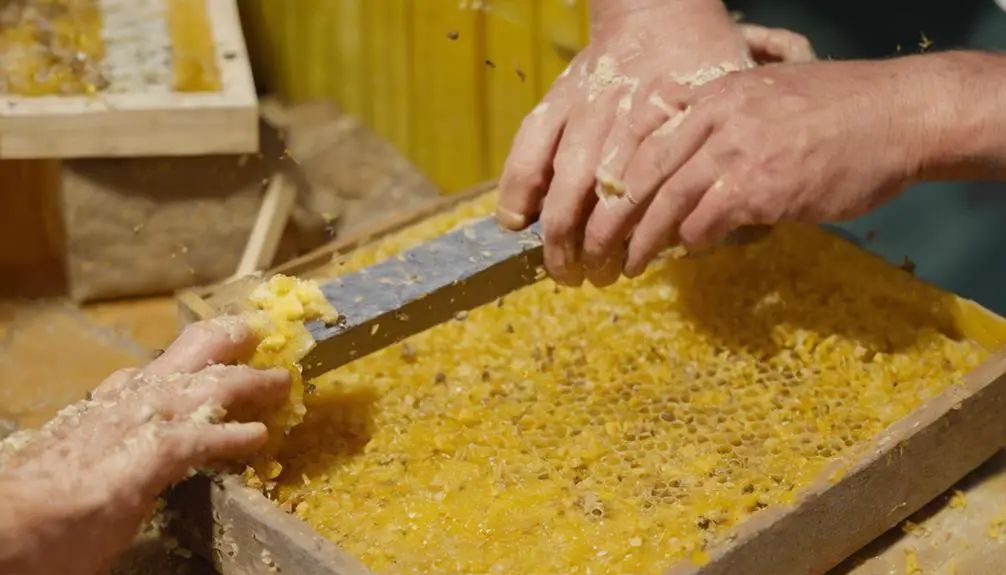
You mightn't realize it, but there are several common mistakes you could be making when handling beeswax that lead to its deterioration and crumbly texture.
One such mistake is improper storage. Beeswax should be stored in a cool, dry place, away from heat and moisture. Storing it in a hot or humid environment can cause it to become brittle and crumbly.
Another mistake is overheating the beeswax. While it's necessary to melt beeswax for certain applications, doing so at too high a temperature can damage its structure and lead to a crumbly texture once it cools and hardens.
You could also be handling the wax too much. Excessive handling can introduce impurities and moisture, both of which can affect the texture of the beeswax. To avoid this, handle the wax as little as possible and always ensure your hands are clean and dry.
Lastly, not cleaning beeswax properly before use can lead to issues. Any impurities left in the wax, such as honey or propolis, can cause it to become crumbly. Always clean your beeswax thoroughly before using it to ensure it maintains its ideal texture.
Tips to Prevent Crumbly Beeswax
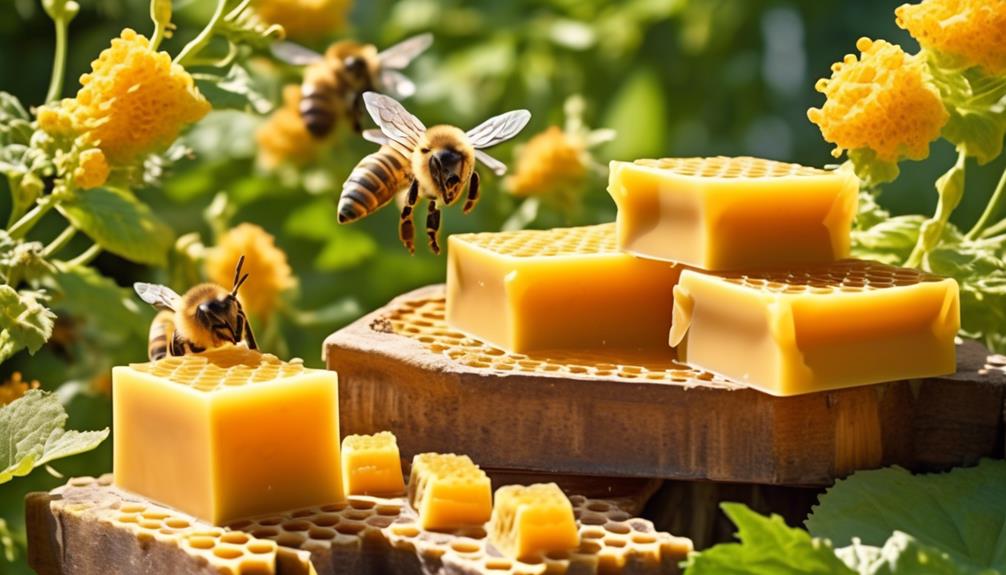
Having understood the common mistakes that lead to crumbly beeswax, let's now explore some practical tips to prevent this issue and maintain the optimal texture of your beeswax.
Firstly, monitor your melting process closely. Beeswax should be melted slowly over a double boiler, not directly on heat, to avoid overheating. An excessively high temperature can cause the wax to become brittle and crumbly once it re-solidifies.
Secondly, consider the purity of your beeswax. Impurities or additives can affect the texture, causing it to crumble. Make sure you're using 100% pure beeswax for the best results. If you're unsure, verify the source and quality of your beeswax before use.
Lastly, storage plays a key role. Beeswax needs to be stored in a cool, dry place, away from direct sunlight. Too much heat or humidity can degrade the wax, resulting in a crumbly texture.
Seeking Professional Advice for Beeswax

Despite your best efforts, if crumbly beeswax remains a persistent issue, it's advisable to seek professional advice. Beeswax experts, such as experienced beekeepers or those involved in the honey industry, possess a wealth of knowledge about this versatile substance. They're well-versed in the many factors that can affect beeswax's texture and quality, including temperature variations, humidity levels, and the health of the bees themselves.
Don't hesitate to reach out to local beekeeping associations or honey producers. They can offer valuable insights into your beeswax dilemma and may even be able to diagnose the problem on the spot. If you're involved in commercial beeswax production, consulting a professional could save you time and money in the long run.
Frequently Asked Questions
How Does Beeswax Impact the Environment and Bee Populations?
Beeswax, when harvested responsibly, doesn't have a negative impact on the environment or bee populations. In fact, it's a sustainable byproduct of honey production.
However, if you're buying beeswax, you should make sure it's from a reputable source. Irresponsible harvesting can stress bee populations and harm the environment.
What Alternative Materials Can Be Used if Beeswax Is Not Available or Preferred?
If you're seeking beeswax alternatives, you've got several options. Soy wax, paraffin wax, and carnauba wax are all excellent substitutes. They're easy to handle and offer similar benefits.
Coconut oil or shea butter can also replace beeswax in skin care products. These alternatives provide a similar texture and moisture-locking benefits.
Is It Safe to Consume Beeswax and What Are Its Health Implications?
Yes, it's safe to consume beeswax in small amounts.
You'll often find it in food products as a coating or glazing agent.
However, it doesn't provide any significant health benefits since it's not digestible. It simply passes through your system.
Remember, while it's safe, consuming large amounts could potentially lead to intestinal blockage.
How Is Beeswax Used in Cosmetics or Skincare Products?
Beeswax is a key ingredient in many cosmetics and skincare products. You'll find it in lip balms, creams, and lotions because it helps provide a protective layer on skin.
It's also great for locking in moisture and has anti-inflammatory properties. Plus, it's a thickening agent, giving products the right consistency.
Can Beeswax Be Used in Candle Making and How Does It Perform Compared to Other Waxes?
Yes, you can use beeswax in candle making. It burns slower and cleaner than other waxes, creating a longer-lasting candle. It also produces a natural, honey-like scent, unlike paraffin or soy wax.
However, it's more expensive and harder to work with due to its high melting point. So, if you're after quality and don't mind the extra effort, beeswax could be the best choice for your candle making project.
Conclusion
In conclusion, your beeswax's crumbly texture could be due to its composition, handling mistakes, or environmental factors.
It's essential to understand these elements and learn the correct handling techniques. Don't hesitate to seek professional advice for better beeswax care.
With the right knowledge and care, you'll be able to prevent your beeswax from becoming crumbly and maintain its optimal condition.

